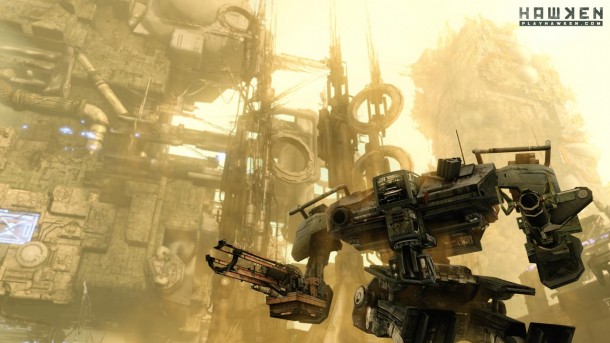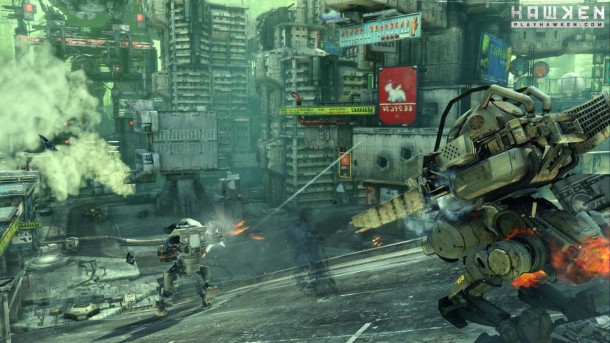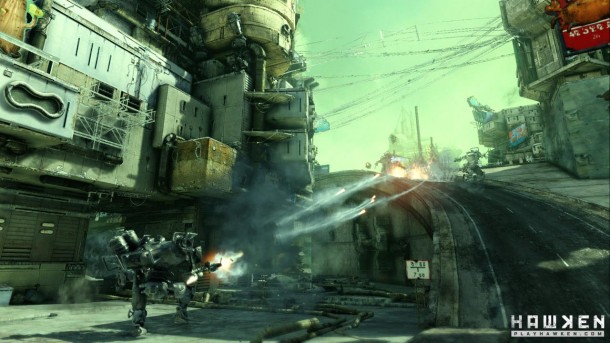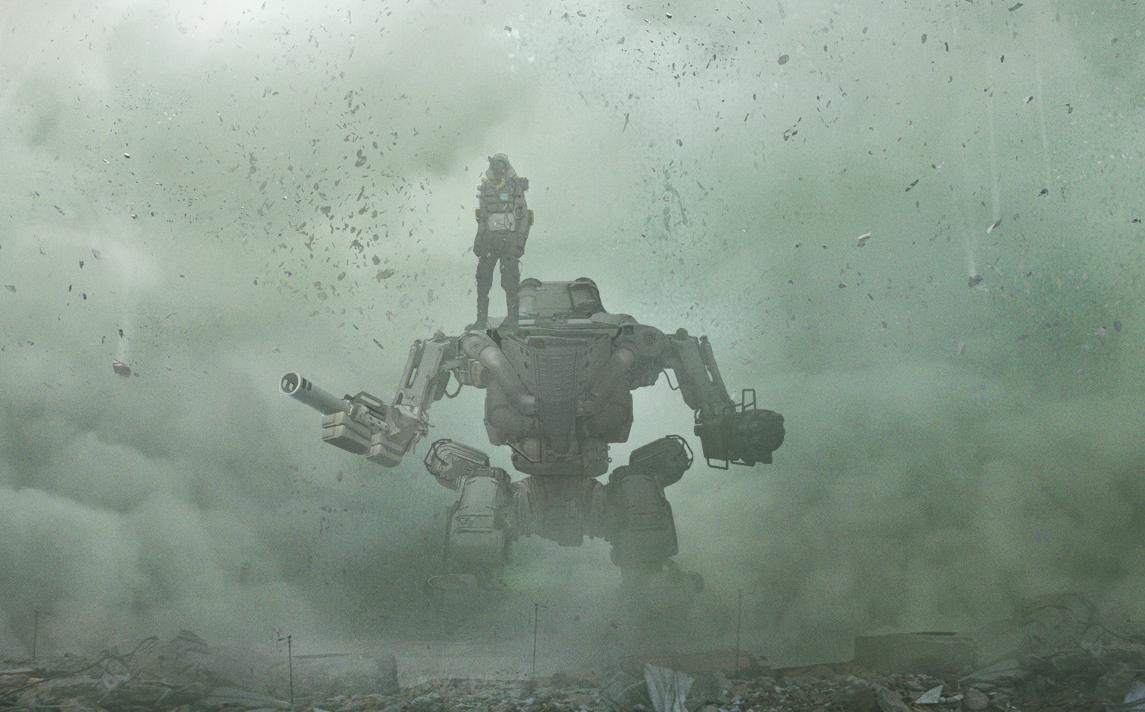It’s hard to not smile when you look at the bevy of free-to-play games launching these days. The clever business model allows players to get in the game without fear of the dreaded “buyer’s remorse”, while microtransactions support further additions down the road and offer players a non-competitive way to stand apart from their peers. Within the burgeoning F2P “cloud”, a long-dormant genre is making its return, that of metal titans and towering weapons: the mech shooter. Leading the charge is Hawken, one of the most promising takes on the storied idea of giant robots shooting the hell out of each other. We loved the game at E3 and gave it an Editors’ Choice award, but at PAX Prime I had a chance to take the game for another test drive and speak with Khang Le, the creative director at Adhesive Games. It’s safe to say the game is still looking fantastic.

Hawken resides in a space between the lumbering Western robots of MechWarrior and the sleek Eastern mechs of Armored Core, borrowing elements from a variety of titles ranging from Team Fortress 2 to, believe it or not, Duke Nukem. Despite the long list of inspirations, the war-torn cityscapes in this bleak environment seem crafted from fresh clay. In the map that was playable at PAX, the streets were dense and detailed, strange billboards and oddly-constructed buildings littering the massive battlefields. It evokes a feeling of a more futuristic World War I, a layer of soot and grime covering the real highlight of Hawken’s presentation: the mechs.
“Customization on every front” was mentioned more than once as we dove into the Garage, the central hub for making your mechs your own. Three central weight classes – light, medium and heavy – make up the first major differentiation, and from there paint jobs, weapon options and a handful of different structural components give an impressive amount of flexibility in your design options. Some parts are bulbous and oblong, while others on the heavier mechs are enormous and rigid, sheets of steel and iron to ward against their opponents.
While the options here are more than a bit diverse, they won’t have any effect on the actual stats of your mech, serving only as cosmetic customization. In their place is an “RPG-lite” system, skill trees allowing would-be mech pilots to invest in offensive, defensive and maneuvering capabilities. Beyond that, a small selection of internal components allow for even more diversification, changing things like your fuel reserves or your boost speed. There’s also a decent range of special “gadget” options that can change the tide of battle, from holograms that hearken back to Duke Nukem 3D to stationary turrets in a few different flavors.

For our demo session, I went with a light Scout-class mech. I was able to dart around heavier opponents like the Rocketeers, twin flak cannons going wild as I waited for them to score the few shots needed to quickly dispose of my frail frame. There’s a deliberate sense of weight to every action in Hawken. Combat is just slow enough to be strategic, battles lasting longer than a few seconds in the process. By slowing down the combat as compared to most modern shooters, a skirmish feels more elaborate, the stakes higher and the exhilaration of victory – or defeat – more pronounced. Watching three or four mechs come to blows with each other amid a doodad-crowded square is akin to viewing a deadly dance of metal, explosions and the sound of bullets echoing all around.
With that increased sense of strategy comes a worry that players might not build “the right” mech for combat. That’s something the team at Adhesive hopes to avoid, Le told me. When picking one of the many classes, players can switch out their primary weapon for a handful of other options, but these are all tailored to that class’ function. Your secondary weapon, however, is always static and based on the chosen class. A Sharpshooter is hooked up with a long-range rifle, while the behemoth Rocketeer would get outfitted with what else but a twin rocket launcher, aptly classified as a Hellfire Missile Launcher.
Again, that little bit of customization helps each mech feel a bit different.

Adhesive is pushing ahead with an impressive transmedia approach, fleshing out the Hawken universe in ways they can’t within the context of the multiplayer-only game itself. A 90-page graphic novel is due out sometime next March, with a WB-sponsored webseries and a feature film on the way after that, the latter directed by Mike McCoy (Act of Valor). It’s an initiative that seems refreshing in and of itself, and I’m always eager to see more multiplayer games and IPs in general willing to stretch themselves out a bit.
For a 21-person team that started with just four individuals, Adhesive has a firm grip on what a modern mech shooter should be. Fans at large seem to agree: signups for Hawken’s closed beta surpassed 350,000 at the time PAX rolled around, and as the game enters its second Alpha test, they show no signs of slowing down. By reining in a handful of different hallmarks of the shooter genre, Hawken stands on its own as a beautiful chimera. As an ambassador to the public of the revitalized mech shooter, it couldn’t be more exciting.
Hawken launches on December 12th as a PC exclusive. You can sign up for the beta right now.



No Comments